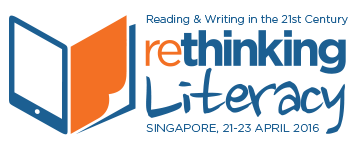Beyond Text: reThinking Literacy
Take a moment and think about the websites you view as an adult. BBC. ESPN. CNN. Visualize a site you visited recently, or even click away from this post to take a look at it at one of the sites listed above. What do you see?
Image.
Image.
Video.
Short caption.
Chances are the websites you visit are dominated by visuals. Today, images and video capture more real estate on websites, sometimes dominating text by three to one. This shift in how information is presented yields new opportunities and challenges educators to amplify instruction to include all types of literacies. To be effective consumers and more importantly, effective communicators, we must explicitly teach kids to analyze, evaluate and create messages in a variety of print and digital media (See ISTE Student Standards, Center for Media Literacy or CCSS Anchor Standards for more information).
To do this, we expand our definition of what it means to “read” by providing multiple entry points to learning as students study images, view video and think deeply about multimedia. We build background knowledge with photographs and analyze infographics to infer the artist’s message. As with print, we provide explicit instruction on how to read and annotate a video and guide students to ask questions, clarify and rewatch the video to build knowledge. Today we embrace new opportunities to connect students to their passion and leverage tech as a way to bring kids to text. Most importantly, we engage students to create their own content so they can understand the role of media in society and communicate effectively in today’s participatory culture.
I can’t wait to explore this more in April at reThinking Literacy and together discover new ways to ask students, “What do you wonder? Where can we find that information? How do you want to share your thinking?” My hope is that we move beyond terms “print,” “digital,” and “media” and simply teach kids to be effective thinkers in every context. I believe it’s time to rethink literacy and teach kids to read the world.




Leave a Reply
Want to join the discussion?Feel free to contribute!